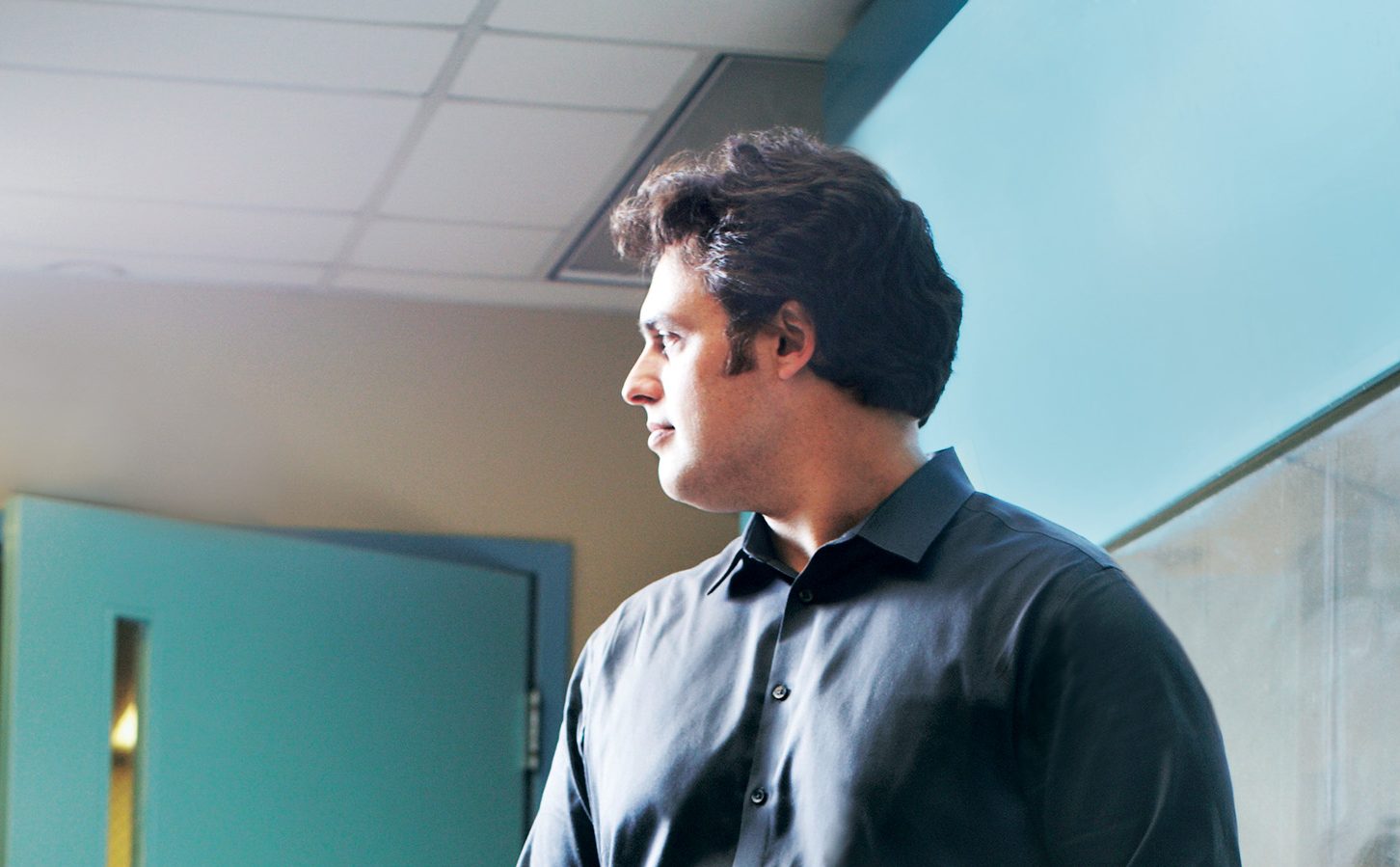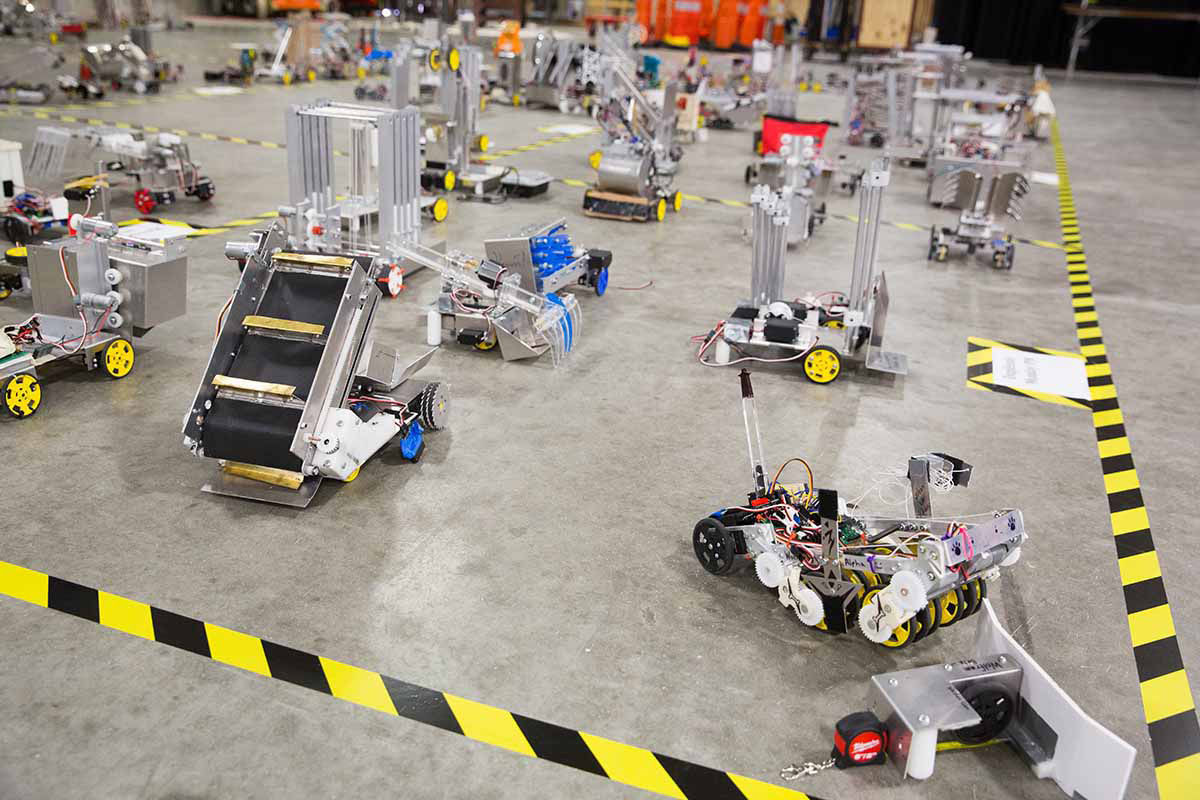2.007: Design and Manufacturing I
As Purell stations were being installed across campus in early March, 2.007 lab instructors were checking in with their students about what they hoped to get out of the robotics-centered Design and Manufacturing I class if they couldn’t continue meeting on campus. What they heard over and over was that not getting to build their robots would be a huge disappointment.
“A lot of students had come to MIT to take 2.007,” says Amos Winter, SM ’05, PhD ’11, co-teacher with fellow mechanical engineering professor Sangbae Kim of the class made legendary by the late Professor Woodie Flowers ’68, MEng ’71, PhD ’73, who conceived of its robot competition in the 1970s. As spring break approached and the prospect of finishing the semester on campus seemed less likely, the teaching staff assembled to rethink. “We tried to approach it as a design problem,” says Winter. That is, having talked to key stakeholders (chief among them the students), they outlined all the constraints and requirements, brainstormed possible solutions, and settled on a multipronged approach.

Rather than try to deliver live lectures over Zoom, they decided, they would post the lectures they’d recorded of last year’s class. But lectures, they knew, weren’t the most essential piece of the puzzle. “The real learning in the second half of the semester happens in the lab,” says Winter. As students build their robots, they’re working side by side with lab instructors in an apprenticeship model, gaining experience and building confidence.
Winter and Kim and the course staff shifted the focus from building a competition-worthy robot to having students improve their design skills by continuing to refine their robot designs. And without the pressure to build a functioning bot in time for the competition, they could create more detailed CAD designs, do things like analyze the impact of friction on the robot’s performance, carefully consider its power needs, and then predict how it would behave when built. Two weeks into the online half of the semester, Winter was enthusiastic about the students’ CAD designs. He’d just seen a student present a “fantastic” animation of a complicated mechanism she’d thought up while on campus—an idea he’d never seen anyone execute before. And having animated it, she was working on an in-depth analysis.

Once pass/no record grading was declared mandatory for the semester, Winter thought students might decide not to put a lot of effort into the class, since they’d finished seven of its 12 graded elements before break. “But I was dead wrong,” he says. “Students came back and embraced the opportunity—‘Let’s get something out of this.’”
While eager to make the best of a difficult situation, the students still ultimately want to build their robots. So the department will offer a three-unit elective next spring to give students from this year’s 2.007 class an opportunity to actually create their bots—and test them out in competition.
Revamping 2.007 halfway through the semester was a challenge, but “constraints promote innovation,” Winter says. “We’ve been thrown a bunch of constraints we had never expected. It’s made us think in different directions and pursue different solutions we would not have thought of otherwise. And that’s not always a bad thing.”
Keep Reading
Most Popular
Large language models can do jaw-dropping things. But nobody knows exactly why.
And that's a problem. Figuring it out is one of the biggest scientific puzzles of our time and a crucial step towards controlling more powerful future models.
The problem with plug-in hybrids? Their drivers.
Plug-in hybrids are often sold as a transition to EVs, but new data from Europe shows we’re still underestimating the emissions they produce.
Google DeepMind’s new generative model makes Super Mario–like games from scratch
Genie learns how to control games by watching hours and hours of video. It could help train next-gen robots too.
How scientists traced a mysterious covid case back to six toilets
When wastewater surveillance turns into a hunt for a single infected individual, the ethics get tricky.
Stay connected
Get the latest updates from
MIT Technology Review
Discover special offers, top stories, upcoming events, and more.